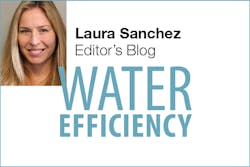One of my guilty pleasures is a multi-media biology project called “Pondlife,” which features images and video footage of some of New York City’s tiniest inhabitants—unicellular organisms that reside in the city’s fountains, reservoirs, and waterways.
The digital storytelling is produced by biology post-doc Sally Warring, who offers a window beneath the surface into the complex lives of the organisms as they move, eat, reproduce, and do their best to escape predation. Warring captures intimate video images of ciliates, colonies of algae, rotifers, predatory amoebae, and cyanobacteria interacting. It’s mesmeric.
Environmental remediation has been an important topic of discussion lately as municipalities from California to Cape Cod struggle to manage pollution from pesticides, PFAS, and perchlorate contamination. Just this week the US EPA published its PFAS Action Plan for decontaminating sites across the US. It sees removing harmful substances from groundwater, sediment, and surface water as an increasingly vital step for ensuring the health of our communities.
I was fascinated by recent studies indicating that bacteria—tiny microorganisms like those observed in Pondlife—can be used to remove toxic compounds such as perchlorates from water supplies. A team of researchers at the University of California, Berkeley, led by Professor John Coates, is harnessing the contaminant-removing capabilities of beneficial bacteria.
Perchlorates are chemical compounds that function as oxidizers in propellants such as rocket fuel and fireworks. The compounds were added to the US EPA’s Contaminant Candidate List in 1998 after concerning levels were discovered in California water sources. “Perchlorate is classified as a goitrogen (USEPA, 2005a). Goitrogens can adversely affect human health by affecting iodine uptake by the thyroid gland,” a peer-reviewed AWWA perchlorate study explains. It can also negatively affect fish and amphibians.
Using a bioreactor—a vessel that provides bacteria with the essential nutrients needed to convert perchlorate into chloride and oxygen—researchers are able to efficiently decontaminate water. Inside the bioreactor, bacteria produce enzymes that break down pollutants.
“It turns out that the microorganisms that use perchlorate are essentially ubiquitous—they’re not difficult to find,” scientist John Coates told Ensia. “And you can culture them fairly readily. To remediate perchlorate, you just needed to create specific conditions.”
Today bioreactors are operating in California, Kansas, Texas, and Utah. And they’ve proven highly effective. In one minute, a bioreactor in Rialto, CA, can decontaminate a whopping 2,000 gallons of perchlorate-polluted water. According to Coates, with further exploration, scientists will be able to discover additional contaminant-removing bacteria to break down an array of harmful pollutants.
What are your thoughts on harnessing bacteria to decontaminate water?
